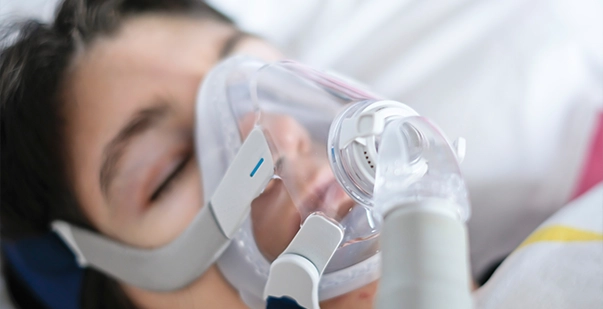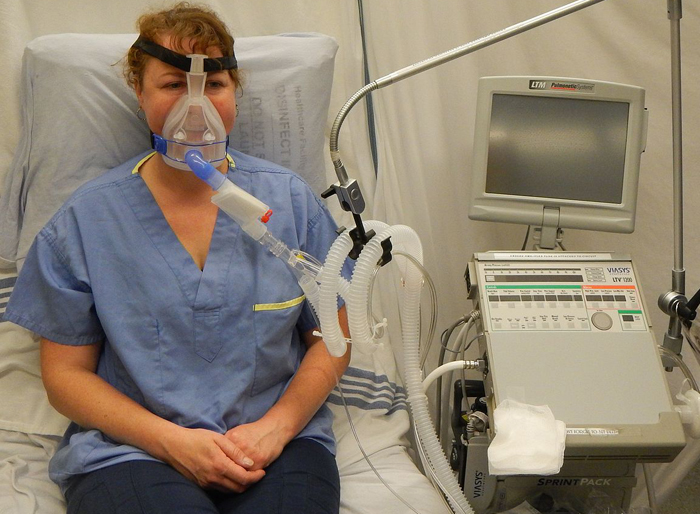BiPAP Rental: Hassle-Free Solutions for Temporary Requirements
BiPAP Rental: Hassle-Free Solutions for Temporary Requirements
Blog Article
Bipap vs. CPAP: Which Is the very best for Your Rest Problem?
When navigating the complexities of rest conditions, the choice in between BiPAP and CPAP therapy is an important factor to consider. While CPAP supplies a consistent air movement suitable for obstructive sleep apnea, BiPAP's double stress setups may enhance convenience for those with even more detailed respiratory issues.
Comprehending Sleep Disorders
Rest problems incorporate a variety of problems that interfere with typical sleep patterns, affecting both the quality and period of remainder. These conditions can manifest in different types, including sleeplessness, rest apnea, narcolepsy, uneasy leg syndrome, and parasomnias. Each condition presents special difficulties, usually causing significant daytime exhaustion, cognitive disability, and emotional disruptions.
Sleeplessness is characterized by problem falling or remaining asleep, while rest apnea includes duplicated disturbances in breathing throughout rest, typically bring about fragmented remainder. Narcolepsy, on the various other hand, is marked by extreme daytime drowsiness and sudden sleep assaults. Troubled leg disorder causes unpleasant experiences in the legs, prompting an unmanageable desire to move them, which can likewise impede the capacity to drop asleep.
The influence of sleep disorders prolongs past specific health, influencing general performance, relationships, and quality of life. Comprehending the particular nature of each condition is critical for reliable medical diagnosis and treatment. As sleep health ends up being significantly recognized as an important element of general health, dealing with these conditions is essential for improving both sleep top quality and daily performance.
Just How CPAP Functions
Continual Favorable Airway Stress (CPAP) therapy is often used as a key treatment for obstructive rest apnea (OSA) The system of CPAP includes the usage of a machine that provides a consistent stream of air through a mask put on throughout sleep. This air flow keeps favorable stress in the airway, protecting against the collapse or obstruction of the throat that can occur during sleep.
When a patient breathes in, the CPAP maker provides a continuous circulation of air, guaranteeing that the respiratory tract continues to be open - BiPAP Rental. This not only alleviates the signs of OSA, such as snoring and disrupted rest patterns, but additionally minimizes the associated health risks, including cardiovascular difficulties and daytime fatigue
The pressure settings on a CPAP maker can be tailored to meet private person demands, usually figured out with a sleep research. Clients normally undertake titration researches to find the ideal stress level for their unique problem. Routine follow-up and changes might be needed to make certain performance and convenience. Overall, CPAP treatment has been shown to considerably improve the high quality of rest and overall health for individuals dealing with obstructive rest apnea.
Exactly How BiPAP Works
BiPAP, or Bilevel Positive Respiratory Tract Stress, is a specific type of non-invasive air flow that is especially valuable for individuals with conditions such as complicated rest apnea or respiratory system disorders. Unlike CPAP, which provides a continuous stream of air at a single pressure, BiPAP gives two distinctive pressure setups: a greater inspiratory pressure for breathing and a reduced expiratory stress for exhalation. This dual-pressure strategy permits for less complicated breathing, reducing the effort required during exhalation.
The tool operates with a mask fitted over the nose or mouth, connected to a device that produces atmospheric pressure. When the person breathes in, the maker supplies the higher stress to aid with airflow, making sure that the airway remains open. Upon exhalation, the equipment instantly decreases the stress, making it a lot more comfy for the person to take a breath out.

Key Differences Between BiPAP and CPAP

In contrast, BiPAP (Bilevel Favorable Airway Stress) uses two different pressure setups: one for inhalation and a lower this website one for exhalation. This dual pressure system permits more comfortable breathing, specifically for patients who deal with exhaling versus a continual pressure. BiPAP is commonly suggested for people with intricate rest apnea, persistent obstructive lung condition (COPD), or those that call for added assistance during rest.
Furthermore, the complexity of BiPAP gadgets generally leads to a greater cost and needs a lot more careful titration than CPAP. BiPAP Rental. Comprehending these crucial distinctions can aid in identifying which tool may be preferable for particular rest disorders, setting the foundation for enlightened therapy decisions
Choosing the Right Treatment
The decision in between BiPAP and CPAP treatment largely pivots on the particular qualities of the sleep disorder, the person's general health, and their convenience with the gadget. CPAP, which delivers a continual stream of air, is generally recommended for my sources obstructive rest apnea (OSA)
On the other hand, BiPAP offers 2 degrees of pressure: one for breathing and a lower one for exhalation. This dual stress system is advantageous for people with intricate rest apnea or those who experience trouble exhaling versus a continuous stress. Additionally, BiPAP is usually suggested for individuals with respiratory system conditions, such as persistent obstructive pulmonary condition (COPD), where varying stress settings can improve comfort and compliance.
Inevitably, a detailed examination by a sleep expert, consisting of a sleep research study, can aid identify which treatment lines up ideal with the individual's needs. Aspects such as comfort, simplicity of usage, and particular clinical problems ought to likewise be considered to enhance therapy outcomes.
Conclusion
In summary, both BiPAP and CPAP serve distinctive objectives in the management of sleep conditions. CPAP works for obstructive rest apnea through constant air movement, while BiPAP offers dual pressure setups that enhance convenience for those with complex rest apnea or respiratory system problems. The choice in between these therapies should be led by individual demands and conditions, requiring a thorough evaluation by a rest professional to make certain optimum treatment end results and enhanced high quality of sleep.

On the whole, CPAP therapy has been shown to dramatically improve the high quality of rest and total wellness for individuals suffering from obstructive sleep apnea.
BiPAP is commonly advised for patients with complex sleep apnea, chronic obstructive pulmonary illness (COPD), or those that call for additional assistance during sleep.
CPAP is effective for obstructive sleep apnea through constant air flow, while BiPAP uses twin stress setups that enhance comfort for those with complicated sleep apnea or breathing concerns.
Report this page